- An electric current I is a measure of the rate of flow of electric charge Q through a given cross-section of a conductor.
- In other words, current is the measure of how fast the charge flow through a cross section of a conductor.
Equation

or
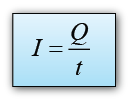
Direction of Current
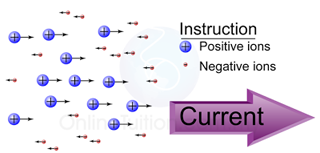
- Conventionally, the direction of the electric current is taken to be the flow of positive charge.
- The electron flow is in the opposite direction to that of the conventional current.
- In a circuit, current flow from the positive terminal to the negative terminal.
- In a circuit, electrons flow from the negative terminal to the positive terminal.
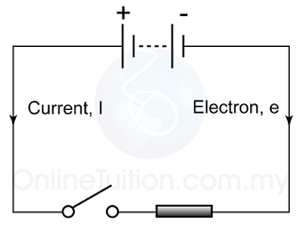
Unit of Current
- The SI unit for current is the ampere (A).
- The current at a point is 1 ampere if 1 Coulomb of electric charge flows through that point in 1 second. Therefore, 1 A = 1C/s.
Example 1:
If 30 C of electric charge flows past a point in a wire in 2 minutes, what is the current in the wire?
Answer:
Charge flow, Q = 30C
Time taken, t = 2 minutes = 120s
Current,
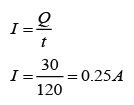
Example 2:
Current of 0.5A flowed through a bulb. How many electrons had flowed through the bulb in 5 minute? (The charge of 1 electron is equal to -1.6×10-19 C)
Answer:
Current, I = 0.5A
Time taken, t = 5 minutes = 300s
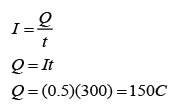
Charge of 1 electron, e = -1.6×10-19 C
Number of electrons, n = ?
